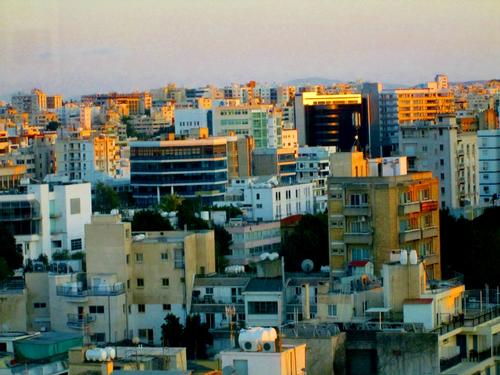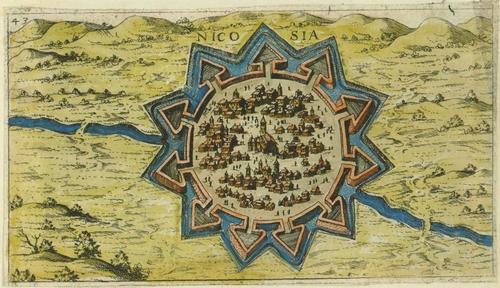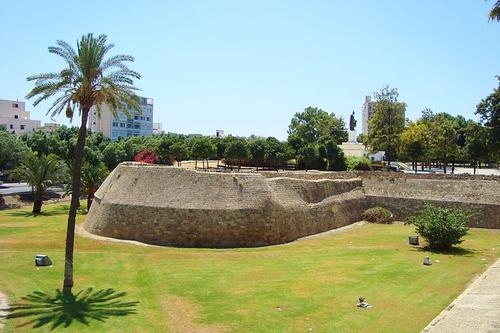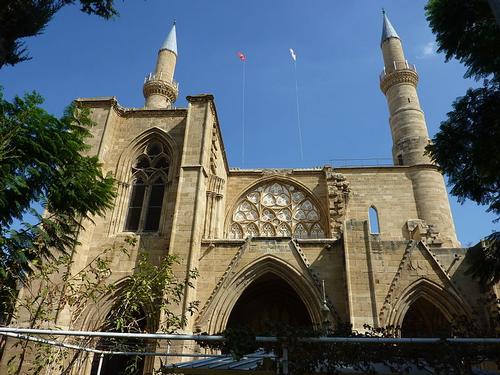CYPRUS
Nicosia (Lefkosia)

Nicosia (Lefkosia)
Nicosia
Nicosia, also known as Lefkosia, is the divided capital of the island of Cyprus. Despite the division, it is a modern city with a cosmopolitan feel and a rich history.
 NicosiaPhoto: LefkosiaChyprus CC3.0 Unported no changes made
NicosiaPhoto: LefkosiaChyprus CC3.0 Unported no changes made
Location
Nicosia is centrally located on the island of Cyprus on the banks of the Pedieos River. The Cypriot capital is divided in two from east to west. One part of the city is occupied by the other part belongs to the Greek Republic of Cyprus. The Republic of Northern Cyprus is only recognised by Turkey itself, the rest of the international community sees it as occupied territory. In the middle of the city runs the so-called 'Green Line', a buffer zone set up by the UN.
Weather
The climate of Cyprus is best described as Mediterranean. As mentioned, Nicosia is centrally located on the island and therefore has the least influence of the sea on the weather. This means hot, dry summer months with temperatures that easily reach 35 degrees Celsius. The winter months are a lot cooler and wetter with temperatures between 6 and 17 degrees. Frost is almost non-existent.
History
Ledra was the first city on the site where Nicosia now lies in 280 BC. The city's fame grew steadily over the centuries. By 1211, Nicosia had become, for that time, a well-protected fortified city. In all probability, the city was called Cossia in the 13th century. What is certain is that the city was already very rich then. People lived in luxury, and posh houses and other imposing buildings were built. The cathedrals of St. Sophia and St. Catherine both date from this period.
When the Egyptian Mammoths invaded Nicosia in 1426, they took the then King Janus of Nicosia prisoner and completely destroyed his royal palace. Not only the palace, but also part of the city was destroyed. When the Venetians arrived in Nicosia in 1489, they decided that the city should be protected even more. They made the city smaller and built a strong protective wall around it. Outside the wall there had to be some kind of buffer and therefore they demolished many buildings outside the wall.
 Nicosia map from 1597Photo:Public Domain
Nicosia map from 1597Photo:Public Domain
The defensive wall was built just in time, because in 1570 the Ottomans besieged the city. Despite strong resistance from the fortress town, Nicosia had to surrender within seven weeks. There were many casualties on both sides. The Turks drew a border through Nicosia; between the Greek Cypriot north and the, from then on, Turkish south of the island. The UN guards this border to this day. The border is also called the 'Green Line', because it was drawn on the map in green ink. People can move freely from the north to the south of the island, as relations are not strained. The UN-sponsored 'Nicosia Master Plan', which aims to restore all the destroyed buildings, will hopefully help the divided city to become one again one day.
Sights
As Nicosia's history shows, the city's defensive walls have been of great importance. If you land in Nicosia by plane on a clear day, you can see the walls. The walls provide access to the historic centre of the Cypriot capital and are almost completely intact in both the north and south of the city. Some parts of the wall date back to the Middle Ages. There are eleven bastions in the wall, six of which are in the Turkish part of Nicosia. The Musalla bastion houses the National Battle Museum.
 Defensive walls NicosiaPhoto:AncientNicosia CC 3.0 Unported No changes made
Defensive walls NicosiaPhoto:AncientNicosia CC 3.0 Unported No changes made
The Cyprus Museum is the largest and most important archaeological museum in the country. This museum has a large and unique collection of antiquities and gives a good impression of the development of Cypriot civilisation throughout the centuries. The collection consists of archaeological finds from all parts of the island and includes pottery, jewellery, sculpture and a collection of coins.
Agios Ioannis Cathedral dates from 1662 and was built by Archbishop Nikiforos on the site of a 14th century chapel dedicated to John the Evangelist. The church is located in the old city centre and is the centre of the Orthodox Church in Cyprus. The church has a number of original murals depicting scenes from the Bible.
The Selimiye Mosque is housed in the former St. Sophia Cathedral. The church was built in 1193 by order of King Amaury and has had a religious function ever since. The marble from the original structure has been incorporated into the north entrance of the mosque. This building is the focal point of the northern part of Nicosia. It is an imposing building with beautiful carvings as we know from European cathedrals. The towers now serve as minarets. You could see it as a strong example of recycling.
 Selimiye Mosque NicosiaPhoto:Chris06 CC 4.0 Internationaal no changes made
Selimiye Mosque NicosiaPhoto:Chris06 CC 4.0 Internationaal no changes made
Tips
In Nicosia, you should definitely try some authentic Cypriot cuisine. This cuisine is strongly influenced by both the Greeks and the Turks. A lot of cheese (feta), aubergines, mushrooms, olive oil and of course grilled meat are on the menu. Special is the 'halumi', a slice of warm Cypriot cheese. The 'meze' are usually served during drinks in a tavern and can best be compared to the Spanish tapas.
Useful links Nicosia (Lefkosia)
BBC Country ProfilesWorld Fact Book Explore all Countries
How to call
Last updated November 2025
Copyright: Team - The World of Info